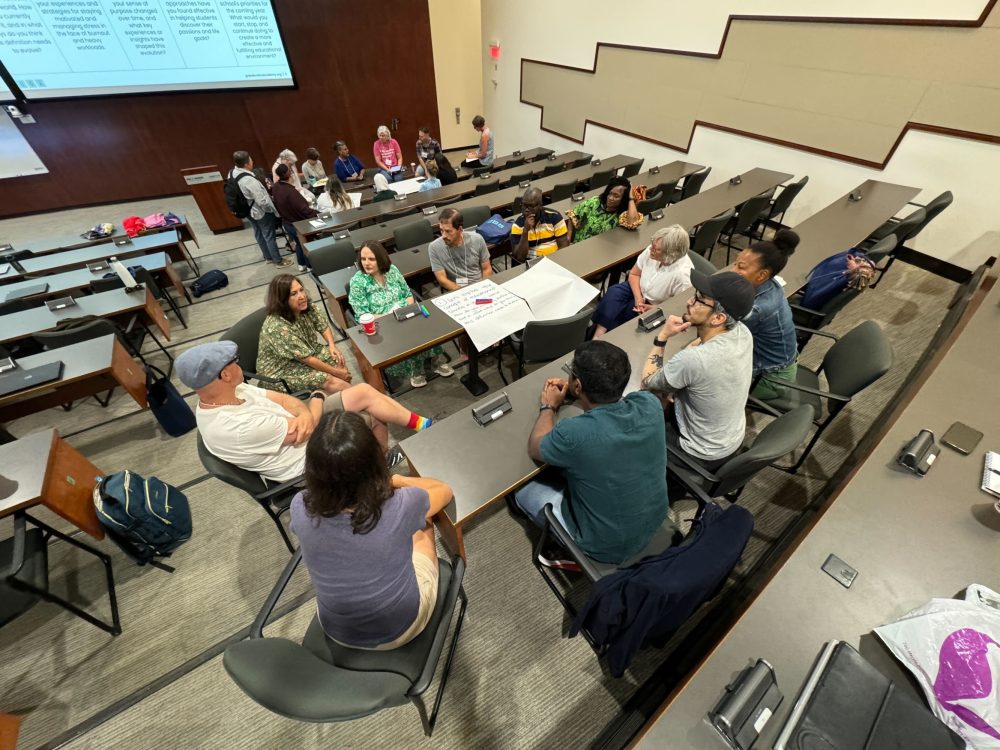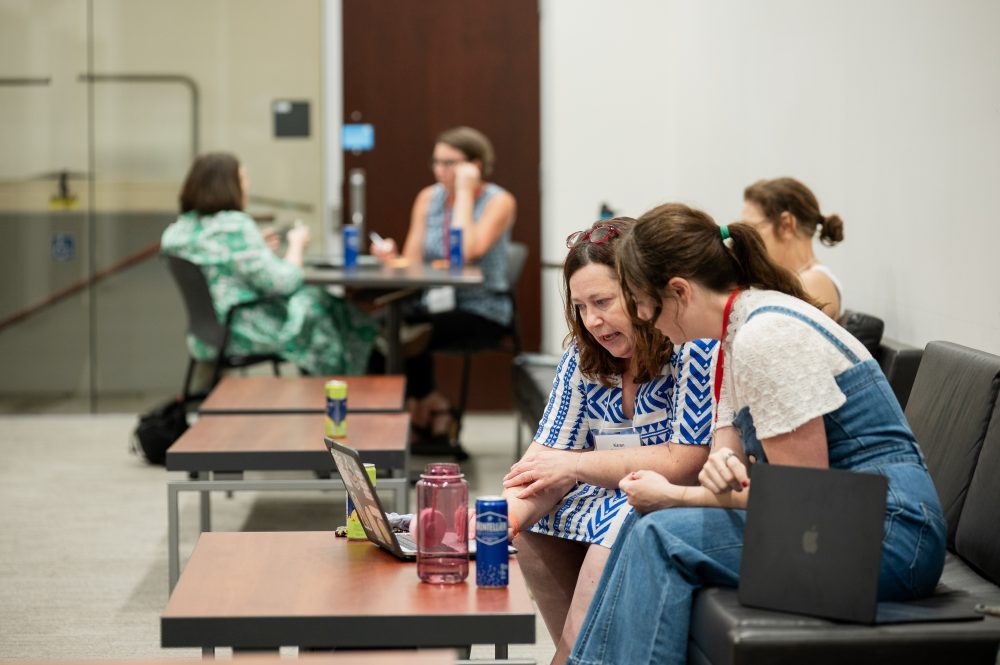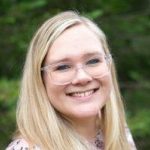GOA as a Lab School: Innovation Through Practice
“GOA is a Lab School that tests and refines innovative pedagogical practices and scales future-ready models for our member schools.” —Michael Nachbar, GOA Executive Director
At GOA, being a lab school is a shared commitment to testing new ideas and evolving with purpose. Becky Green, GOA’s Associate Director of Faculty Development and a faculty coach, says, “The name ‘lab school’ gives people permission to innovate and try new things.” It creates space for curiosity, risk-taking, and collaboration, both within GOA and across its global network of member schools.
This mindset empowers educators and school leaders to experiment, reflect, and share what they learn. "We are innovating. We are learning. And we are extracting those ideas to help schools learn from our experience,” says Nachbar. “This is a really unique aspect of our work.”
Let’s Share What We’re Learning
GOA’s founding educators had to solve a fundamental challenge: How to design meaningful learning experiences for students spread across the globe who couldn’t meet in the same place — or even at the same time. This constraint sparked innovation, pushing them to rethink time, space, relationships, and teaching practices.
As faculty navigated this new context, their teaching — both online and in their on-campus classrooms — began to transform. “Teaching for GOA has completely changed the way I think about my role as a teacher,” Nachbar recalls hearing from faculty. “It’s changed the way I think about engaging with students. It’s changed the way I think about time. It’s changed the way I think about everything.”
Though GOA wasn’t initially designed as a lab school, Nachbar says, “The way we were created made us a lab school.” That culture of reflection and continuous growth became the foundation for GOA’s professional learning. “We took the stance of ‘Let’s share what we’re learning.”

Reimagining Teaching & Learning
GOA faculty are encouraged to be flexible, try new things, and rethink what teaching can look like. And this can be challenging.
“Even as a person who chose to teach in GOA in this way, I experienced several moments of difficult growth,” says Joel Garza, an English teacher from Greenhill School in Texas who has taught Race & Society and Fiction Writing for GOA for six years. “It really took a few times back and forth with my coaches to see how to think of students as doers rather than consumers of the skills,” he continues. He began designing for a variety of skills and with intention in every task: What skill are students acquiring or honing? What will they be able to do after?
Garza now grounds his teaching practice in the pillars of competency-based learning (CBL) — agency, equity, and transfer. He fosters agency by giving students meaningful choices in their reading and writing, encouraging ownership of their learning. To promote equity, he reimagines tools like checklists, turning them into student-created menus that guide future assessments to support equity and elevate student voice. And he supports students drawing connections between their experiences in art and athletics, such as appreciating a different point of view or set of skills, to the classroom, helping to make their learning more relevant and transferable across other contexts. “Once they locked in the agency they had, once they locked in on my trying to keep them accountable to specific skills, once they saw that it was a process that had happened in other parts of campus, we were ready for a different kind of semester,” Garza says.
Andrea Gowin is the Upper School Dean for Providence Day School in North Carolina and a GOA faculty member who has taught Introduction to Legal Thinking for five years and recently added Macroeconomics to her course list. Gowin says she found that GOA’s emphasis on student agency and thoughtful design deeply shaped her teaching practice. “Even when I allow student choice, I keep the same rigor. GOA has mastered that,” she says. “That's something that I've definitely brought back in terms of teaching classes here at Providence Day.” Gowin intentionally designed a recent comparative religions class so that students were able to choose which religions and projects to focus on. “I was confident in the way I ran the course based on my work with student groupings and choice at GOA.”
Gowin has also applied these approaches in her previous role as a professional learning coach at Providence Day, adapting GOA’s CBL framework to help define a profile of what skills they are looking for in students when they graduate. While GOA works with older students, she found creative ways to translate its core competencies — like collaboration across differences — into developmentally appropriate goals for all grade levels, demonstrating their broader relevance and adaptability. “What lower school academic teams are looking for in terms of collaboration is much different than what an upper school is looking for,” she says. “GOA obviously doesn’t serve six-year-olds, but it was a way to integrate the mindset and message of the competencies in a different way.”
Professional Growth Through Experimentation
“We tend to attract educators who want to be part of something that moves quickly, that thinks differently,” Nachbar says. Teachers at GOA are experimenters, designers, and learners.
“I didn’t always have transparency with my students about what they were doing that day,” Garza says. “I used to say, ‘I’m kind of like a jazz musician — I know the melody that I'm going to play. I know how to stretch out the melody. I know how to play around the melody. I know how to stick the landing.’ What that analogy ignores is: Can they follow you? Do they know where they're going? Do they know the melody?” This shifted when he began teaching for GOA. Preparing for his first course, he carefully reviewed each task through a student lens, especially thinking about learners for whom English isn’t a first language, and realized where more clarity was needed. “And so the Sunday before my first GOA course went live — fueled by that kind of anxiety — I made myself a cup of coffee, and I turned the camera on myself.” In what he now calls his weekly “Sunday morning coffee video,” Garza explains exactly where students are and where they’re going. “Talking directly to students — that relatability, that disarming candor about you in your room where you are talking about your own life — it personalizes and domesticates the material.” Garza brought this transparency into his on-campus classroom, too. Each day starts with a single slide outlining what they’ve just done, what they’re doing now, and why. “That kind of clarity and transparency has meant that I'm thinking a lot more carefully about the time,” he says. “I'm thinking a lot more carefully about the variety. I'm looking really clearly at the design elements on this slide.”

Feedback is another area where Garza and Gowin have experimented. At GOA, all faculty work with learning coaches. “I think having a coach has really helped me in terms of how I was providing feedback,” Gowin says. “The intentionality of my feedback has improved from working with GOA.” Along with student choice and technology, feedback is one of the “biggest ways that I've experimented with things at GOA that I'm now experimenting in my home school — how much feedback I'm giving, what ways I'm giving feedback, and whether it's a Loom video, for example.”
Garza now uses different types of feedback depending on the task, and he's upfront with students about what to expect. Sometimes, it's quick — just a point or a zero. Other times, he writes a class-wide letter with overall reflections, recognizing, “It's feedback to me as much as it is to them.” For certain assignments, he gives short "glow/grow" comments, and others get full, personalized feedback. He encourages students to reach out via Pronto, GOA’s messaging platform, if they need more support — modeling a communication style that the adults in their lives often use to connect with their colleagues. This approach helps students take ownership of their learning while keeping feedback purposeful and manageable.
Gowin says, “Even simple concepts, such as student grouping, get a refresh because GOA does so many intentional pairings of individuals throughout the semester.” Garza agrees: “The attention that a GOA instructor has to have to break up groups and to get people talking to one another deliberately is another thing that really impacted how I look at things on this campus. Can we mix up the groups you are used to here in this room? Can we break you into groups based on birthdays? Can we break you into groups based on the sport that you play?”
An Ecosystem of Learning
“A lab school is part of an ecosystem of learning — where there's always sharing, borrowing, and recalibrating,” says GOA’s Becky Green. “It then supports the innovation and inspiration the profession needs.”
Because GOA faculty are also educators at GOA member schools, the exchange between innovators and practitioners within GOA's global network is constant. Gowin, for example, drew on her GOA course design experience to support her school’s tech team in implementing the Canvas learning management system. She guided them through how teachers use the platform, how to build modules, and how to organize course materials — immediately integrating discussion boards as part of the design. This shift in practice creates a discussion space where students can process their thoughts before responding and promotes engagement for all students — not just those who are always the first to raise their hands in the classroom. “They’re somewhat shielded because they are not having the conversation in the moment,” she says. “So being able to process a comment and review it, I think, is really important.”
For Garza, collaborating with other GOA educators on course redesign has deepened his understanding of CBL. “In seeing somebody that really understands at a deep level, not just competency-based learning broadly, but recognizing, as a program, that we have tasks we want each student to have each week,” he says. “That's been the area of greatest growth and excitement” and “possibly the most fruitful in professional development, colleague to colleague.”
If Not Us — Who?
“GOA is the front end of innovation, design, and how we’re approaching student learning. And that can be relayed in almost every single other school,” says Gowin. She attributes this to the culture of collaboration and shared purpose among faculty. “These are some of the most inspiring, risk-taking-with-good-intention educators that I've ever been surrounded with,” she says. “The respect of teachers is at a different level at GOA because everyone who's at GOA wants to work for GOA, and everyone has such good ideas that they are bringing to the table.”
“We see it as part of our duty to keep asking, ‘What could we do next?’” Nachbar says. “We can serve as a hub for our schools to share best practices, to ask ‘What are you doing, and what can we learn from it? How do we continue to create spaces for teachers to innovate and push boundaries?’ If not us — who?”
Green puts it simply: “A lab school serves others. A lab school is always learning.”
Learn more from GOA faculty voices:
GOA’s new AI: Next Steps for Educators course centers real-world examples of what GOA teachers, member school staff, and school leaders are trying with AI. From very concrete tips, practical applications, innovations, and policy approaches, the course amplifies the work of educators.
For more, see:
Reimagining Professional Learning: Emerging Models for Educator Growth
Redesigning the Global Capstone: How Participatory Design Transforms Learning
2025 Education Trends and Predictions: Pathways, Curiosity, and Co-Creation in a Blended World
The Extraordinary Together series spotlights stories and outcomes from our member schools, illustrating the impact GOA programs have on students, educators, and schools. Posts in the series highlight the potential of student-centered learning—demonstrating how learners thrive when schools foster curiosity and provide pathways for pursuing passions—and they showcase the tangible ways we partner with schools to drive meaningful change. By sharing these experiences, we seek to illuminate how school membership amplifies our member schools' mission, sparks innovation, and shapes the future of education.
GOA is a nonprofit learning organization that reimagines learning to empower students and educators worldwide. In partnership with our global network of 150 schools, we provide interactive, relationship-driven courses, expert resources, and innovative thinking that help to expand and elevate academic programs. Together, we help students and educators become open to the extraordinary.
Follow us on LinkedIn for the latest learning opportunities and news. Sign up for GOA Insights, our newsletter focused on innovative ideas and best practices for the future of learning. Become a Member School.
